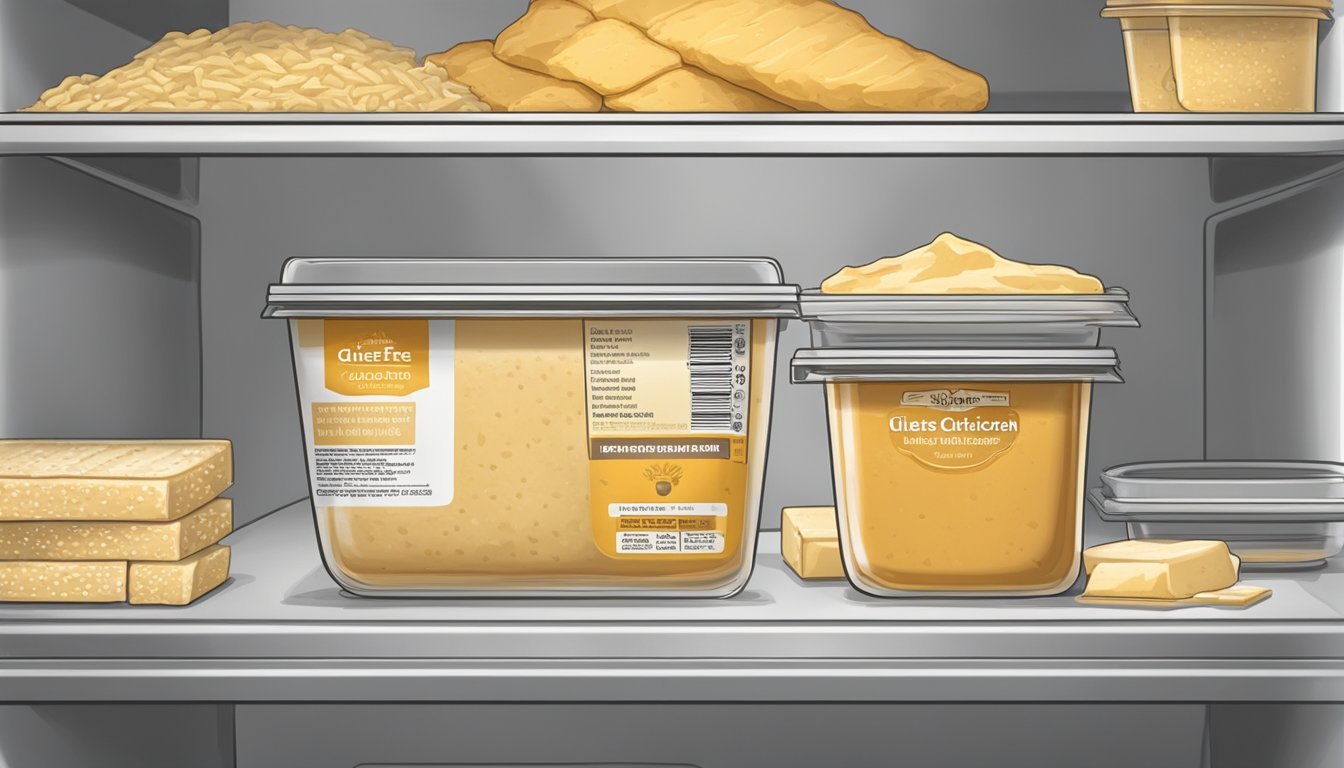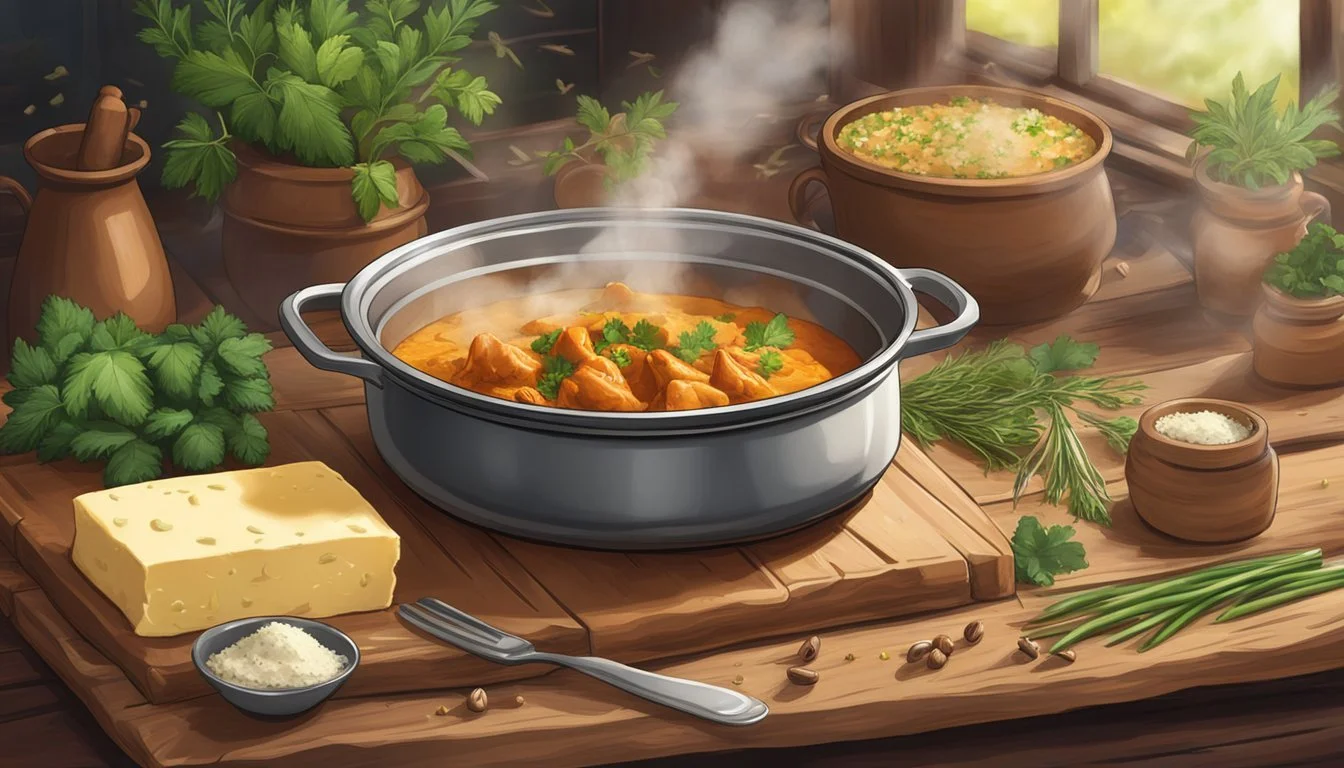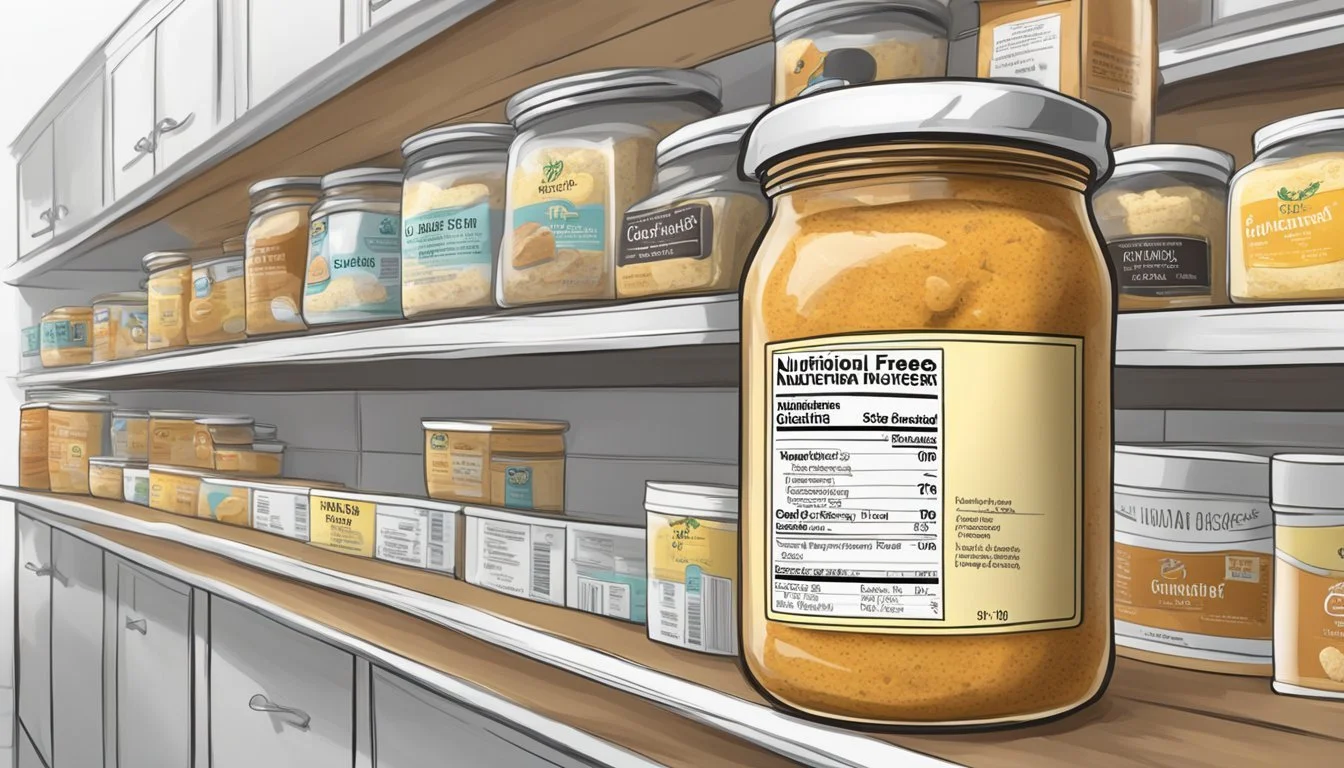How Long Does Gluten-Free Butter Chicken Last?
Storage Tips and Shelf Life
When it comes to the storage of gluten-free butter chicken, its longevity greatly depends on how it is stored. Properly refrigerated gluten-free butter chicken can last for up to 3-4 days. This ensures the meal remains safe to eat and retains its flavorful qualities, typical of this beloved dish in Indian cuisine.
For those looking to keep their gluten-free dinner option for a longer period, freezing is an excellent method. When stored in an airtight container, gluten-free butter chicken can be frozen for up to three months without significant loss of taste or texture. This makes it a convenient meal prep option for busy individuals.
Understanding the best practices for storing gluten-free butter chicken not only helps in maintaining its delicious taste but also ensures food safety. Always reheat thoroughly before consuming, ensuring the internal temperature reaches at least 165°F. This approach allows fans of Indian cuisine to enjoy their favorite gluten-free dinner with peace of mind.
Understanding Gluten-Free Butter Chicken
Gluten-free butter chicken, an adaptation of the traditional Indian dish, retains its rich flavors while accommodating those with gluten sensitivities. Knowing what constitutes gluten-free food and how traditional recipes can be adjusted is essential for safe and delicious consumption.
Defining Gluten-Free
Gluten-free foods exclude ingredients derived from gluten-containing grains such as wheat, barley, and rye. For butter chicken, this typically means ensuring that all spices, sauces, and additional ingredients like yogurt and cream are free from traces of gluten. Cross-contamination is a critical concern, especially in restaurants where other dishes containing gluten are being prepared. Choosing certified gluten-free products and sticking to homemade preparations are ways to maintain a gluten-free diet.
Origins of Butter Chicken in Indian Cuisine
Butter chicken, known as Murgh Makhani, originates from Indian cuisine and is a popular dish both in India and globally. It was created in the 1950s by chefs at the famous Moti Mahal restaurant in Delhi. The cooking style involves marinating chicken with a mix of spices and yogurt before being cooked in a creamy tomato-based sauce. Traditional recipes often include butter and cream, making it rich and flavorful. Modern adaptations include dairy-free versions, catering to those with lactose intolerance or vegan preferences.
Distinguishing Gluten-Free Variants
Gluten-free variants of butter chicken make necessary substitutions to ensure the dish remains safe for those with gluten sensitivities. Key steps include using gluten-free yogurt, ensuring all spices are pure and uncontaminated, and avoiding any store-bought spice mixes unless they are certified gluten-free. Dairy-free options often replace butter with oils like coconut oil and use coconut cream instead of dairy cream. These adjustments do not detract from the authentic taste but provide a safe alternative for those requiring or preferring a gluten-free version of this beloved dish.
Maintaining the authenticity and richness of butter chicken while making it gluten-free is entirely achievable with careful selection of ingredients and preparation methods.
Ingredients and Substitutes
Creating a delicious gluten-free butter chicken involves selecting the right ingredients and knowing suitable substitutes. This ensures the dish is both flavorful and suitable for dietary needs.
Primary Ingredients of Butter Chicken
The main components of butter chicken include chicken, butter, cream, and an array of spices. Chicken thighs or breasts are usually cut into cubes. Butter adds richness, while cream provides a velvety texture. Key spices such as garam masala, cumin, turmeric, and paprika give it its characteristic flavor. Tomato paste is often used to create the sauce base.
Gluten-Free Substitutes
Maintaining a gluten-free diet requires careful substitution of certain ingredients. Gluten-free naan can replace traditional naan bread to accompany the dish. It's important to use gluten-free spices to avoid hidden gluten. Instead of soy sauce, which can contain wheat, tamari serves as a gluten-free alternative. Cornstarch or arrowroot can thicken the sauce if needed.
Dairy and Non-Dairy Options
For those avoiding dairy, several alternatives are available. Coconut milk or coconut yogurt can substitute for cream, maintaining a creamy texture. Dairy-free butter or ghee can replace regular butter. These dairy-free options ensure the dish remains rich and creamy without using animal milk products.
Understanding these ingredients and their substitutes allows for a flexible yet authentic butter chicken experience.
Preparation Techniques
Preparing gluten-free butter chicken requires careful attention to marinating the chicken, creating a rich and flavorful sauce, and effectively combining and simmering the components.
Marinating the Chicken
Marinating the chicken is crucial for maximizing flavor. Ideally, chicken thighs or breasts should be marinated in a mixture containing yogurt, garam masala, cumin, coriander, and turmeric. This blend not only tenderizes the meat but also infuses it with a deep, aromatic taste.
It is essential to marinate the chicken for at least 2 hours, but overnight marination is recommended for the best results. Make sure the chicken pieces are well-coated, and use a large bowl or sealable plastic bag to ensure even marination.
Creating the Sauce
Creating a rich and creamy sauce is fundamental. Start by heating oil in a skillet over medium-high heat. Add chopped onions and sauté until they are soft. Following this, add minced garlic and ginger, stirring for about 30 seconds.
Next, incorporate garam masala, cumin, coriander, and turmeric into the onion mixture. Stir well for about 2 minutes to allow the spices to release their aroma. Tomato paste can then be added, followed by full-fat coconut milk or dairy-free alternatives for those who need it.
Combining Components and Simmering
After the sauce is prepared, turn the heat to low. Add the marinated chicken to the skillet. Ensure that all pieces are well-coated with the sauce. If using a slow cooker, transfer the sautéd onion mixture, spices, and tomato paste, and blend before adding the chicken.
Simmering is where the flavors meld together. Allow the chicken to cook slowly, allowing it to become tender and soak up the rich, creamy sauce. The typical simmering time ranges from 5-7 minutes for skillet cooking or 3-5 hours in a slow cooker, depending on the heat setting.
Simmer until the chicken is cooked through completely and the sauce thickens to the desired consistency. Make sure to stir occasionally to prevent sticking and ensure even cooking.
These preparation techniques help create a delicious and authentic gluten-free butter chicken.
Safe Storage Practices
Proper storage of gluten-free butter chicken is essential to maintain its quality and ensure it remains safe to eat. This involves appropriate methods for both refrigeration and freezing to maximize shelf life and safety.
Refrigeration Guidelines
Refrigerate gluten-free butter chicken within two hours of cooking. Store it in airtight containers to prevent contamination and moisture loss. Set the refrigerator temperature to 40°F (4°C) or below. Under these conditions, leftover butter chicken can be safely consumed within 3 to 4 days.
Key Points:
Use airtight containers.
Refrigerate within two hours.
Ensure the fridge temperature is at or below 40°F (4°C).
Consume within 3 to 4 days.
Freezing and Thawing
For longer storage, butter chicken can be frozen. It should be placed in freezer-safe containers or heavy-duty freezer bags. Label with the date of freezing. Frozen butter chicken can last 4 to 6 months, retaining optimal flavor and texture.
Thaw in the refrigerator overnight.
For faster thawing, use the microwave on the defrost setting.
Reheat thoroughly to at least 165°F (74°C) before eating.
Summary:
Freeze in airtight containers or heavy-duty freezer bags.
Label with the date.
Thaw in the fridge or use microwave defrost.
Reheat to 165°F (74°C).
Shelf Life Considerations
The shelf life of gluten-free butter chicken depends on factors like storage conditions, temperature, and handling practices. Recognizing these variables helps ensure freshness and safety.
Factors Affecting Longevity
Several factors influence how long gluten-free butter chicken remains safe to eat. First is the temperature; it should be stored at or below 4°C (40°F) to slow bacterial growth. Use airtight containers to minimize exposure to air, which can lead to spoilage.
Additionally, only refrigerate butter chicken within two hours of cooking to prevent bacterial development. Freezing can extend its shelf life to about 4-6 months when stored properly.
Indicators of Spoilage
Recognizing spoilage is crucial to ensure safety. Signs include an off odor, altered color, or changes in texture. Slimy or sticky surfaces on the chicken indicate bacterial growth and loss of freshness.
Visual molds, such as fuzzy white or green spots, are clear indicators of spoilage. When in doubt, it's safer to discard questionable butter chicken to avoid foodborne illnesses. Pay attention to these signs to ensure the gluten-free butter chicken remains safe for consumption.
Serving and Pairing
Gluten-free butter chicken offers a rich and flavorful experience that pairs excellently with several side dishes and beverages. The following suggestions will enhance your dining experience.
Accompaniments
Basmati Rice: The fluffy texture and fragrant aroma of basmati rice make it a perfect match for the creamy, spiced sauce of butter chicken. Serve hot, straight from the pot.
Naan: Look for gluten-free naan options or make your own. This soft, Indian bread can be used to scoop up the sauce, adding an extra layer of enjoyment to each bite.
Cauliflower Rice: For a low-carb alternative, cauliflower rice works well. Its mild flavor complements the butter chicken without overpowering it.
Indian Bread: In addition to naan, other Indian breads like gluten-free roti can be a delightful addition. These can also be used to mop up the rich sauce.
Wine and Beverage Pairing
White Wine: A crisp, cool white wine like Sauvignon Blanc or Pinot Grigio pairs wonderfully with butter chicken. The acidity helps balance the richness of the sauce.
Beer: Gluten-free beer, especially light lagers, is a refreshing option that can cleanse the palate between bites.
Non-Alcoholic Options: Lassi, a traditional yogurt-based drink, adds a cooling counterpoint to the spices. For a simpler choice, water with a slice of lemon works well. Mint tea can also refresh the palate.
These accompaniments and beverages will enhance the flavors and ensure a well-rounded meal.
Nutritional Information
Gluten-free butter chicken is not only delicious but also provides various nutrients.
A typical serving contains around 300-350 calories, depending on the ingredients and portion size.
Macronutrient Breakdown:
Protein: Chicken is a rich source of protein, offering about 25-30 grams per serving.
Carbohydrates: This dish usually provides 10-15 grams of carbs, primarily from the sauce ingredients.
Fat: Expect around 15-20 grams of fat, largely from oils, butter alternatives, and coconut cream.
Micronutrients:
Vitamins: Common ingredients add vitamins like Vitamin A (from tomato paste) and Vitamin C (from vegetables).
Minerals: It often includes essential minerals such as iron and potassium.
Health Benefits
High in Protein: Promotes muscle repair and growth.
Healthy Fats: Provides essential fatty acids and can be modified to use healthier oil options.
Low in Gluten: Suitable for individuals with celiac disease or gluten sensitivity.
This dish offers a balanced mix of nutrients, making it a wholesome option for those adhering to a gluten-free diet.
Recipe Variations
Adjusting the spices and experimenting with different protein sources can add a unique twist to classic gluten-free butter chicken. This allows for a flexible approach to individual dietary preferences and flavor profiles.
Spice Adjustments
Varying the spices can significantly change the taste of gluten-free butter chicken. Adding extra garam masala or chili powder can provide a deeper, more robust flavor. For those who prefer a milder dish, reducing these spices or substituting with paprika can be beneficial.
Using simple ingredients like fresh ginger and garlic enhances the dish's aroma. Incorporating coconut oil instead of butter can add a subtle tropical flavor and is suitable for those avoiding dairy. Vegan butter is another alternative that maintains the creamy texture without the use of animal products.
Alternative Protein Sources
For a different take on gluten-free butter chicken, substituting the traditional chicken with other proteins can cater to a variety of dietary needs. Tofu or tempeh can be used for a vegetarian option, providing a chewy texture and absorbing the flavors well.
For seafood lovers, shrimp or fish like salmon can be great alternatives, adding a distinct taste to the dish. Those looking for a heartier meal might consider using lamb or beef, which pair well with the rich, spicy sauce often found in Indian recipes.
Experimenting with these variations ensures that the gluten-free butter chicken can be enjoyed by everyone, regardless of their dietary restrictions or preferences.








